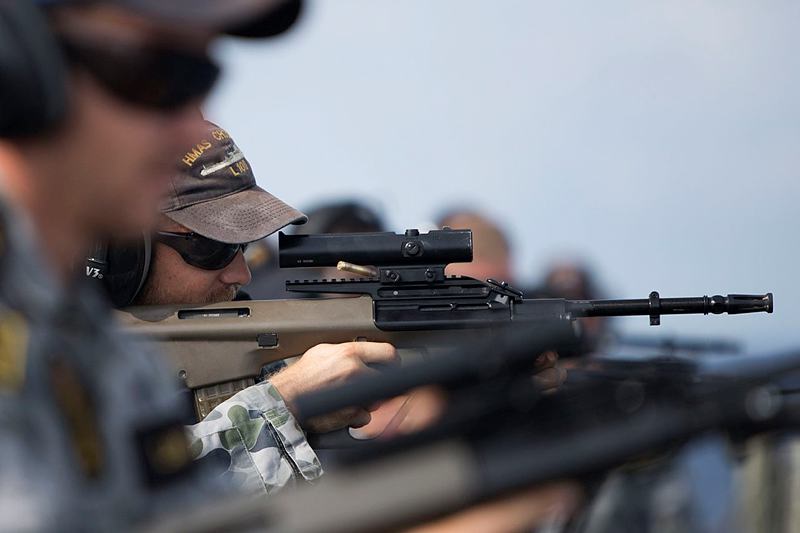As a young soldier I had the opportunity to see the Australian Army’s transition between rifles, from the venerable 7.62 L1A1 SLR to the 5.56 F88 Austeyr. And during my Army service I carried both, as well as the M16 A1 and A2.
In the transition from SLR to the F88 I saw the basic accuracy of the average Australian soldier increase rapidly and the number of accidental discharges rise at an alarming rate. I also got to see first-hand how the reality of a weapon system’s capability could be so quickly undermined by rumors and cultural resistance.
Now working in a think tank, my days of carrying assault rifles on military exercises or operations are long past. Regardless, I was somewhat surprised by Deane-Peter Baker’s December 2014 Strategist contribution on the F90 (the latest version of the F88) and his more recent perspective that the selection of the F90 ‘defies the logic of military effectiveness’.
While I have no personal preference for either the F90 or the M4, I advocate that there’s no such thing as a perfect rifle and that Deane’s assessment of the Austeyr needs further expansion. So I think it’s appropriate to present an alternative perspective to the assertion that the AR-15/M4 family of rifles are the obvious alternative.
One of the long standing ‘golden rules’ of military rifle handling drills is that the operator should never remove their master hand from the pistol grip; doing so renders the operator unable to fire their rifle, if only for a few precious seconds—and all seconds are precious in combat. Unfortunately the design of the M4 and all M16/AR-15 family variants demands that when the rifle jams, the operator is required to remove the master hand to operate the cocking handle; the Austeyr does not.
The bullpup design of the Austeyr has the rifle’s ejection port toward the rear of the trigger, and the M4 toward the front. The Austeyr has its cocking handle on the side of the rifle, while the M4 has its on top of the rifle. When a jam occurs in the Austeyr’s mechanism, the operator is able to remedy it without moving out of cover making it a design more suitable than the M4 for modern combat.
The ergonomic F90 design, including its oversized trigger guard, provide both the large and small operator the opportunity to adopt a range of alternative handling positions. The M4’s cut down shape, whilst affording the operator an adjustable length of pull offers only limited alternative holding positions.
In both of his Strategist pieces Deane has provided an interesting commentary on shooting around cover from the operator’s non-dominant side. While the F90 addresses the functional ejection problems of doing this with a new case deflector, the practicalities remain extant. Very few people are ambidextrous and even fewer still are able to effectively employ a weapon from their non-dominant side. While having the utility to do so is a benefit it isn’t arguably a key factor for rejecting a weapon system.
My final point relates to the economic logic of selecting the AR-15/M4. The AR-15 was built in 1959 and the M16 entered service in 1963. It has been subject to numerous upgrades and developments since then. But there should be little surprise that the M4, the latest model, is reaching the end of its service life. It makes little economic sense for Australia to invest in a weapons system with a short service life. I would argue that the enhancement of the Austeyr in the medium term, until the next generation of assault rifles begins to enter service, makes perfect economic sense.
The use of the M4, and other weapons, by the Australian Special Forces highlights the pragmatic manner in which the Australian Defence Force approaches the capability requirements of various units. The M4 in some circumstances offers advantages for the Special Forces soldier especially in water based operations. But a good rifle for Special Forces doesn’t necessarily make a good rifle for conventional forces.
As I said at the start, I have no strong preference for either the F90 or the M4. But I don’t believe that ‘the M4 beats the F90 hands down’. Nor do I support Deane’s assertion that there’s no other alternative to the M4. Indeed from an economic and functionality purpose the ADF selection of the F90 seems to make perfect sense.


